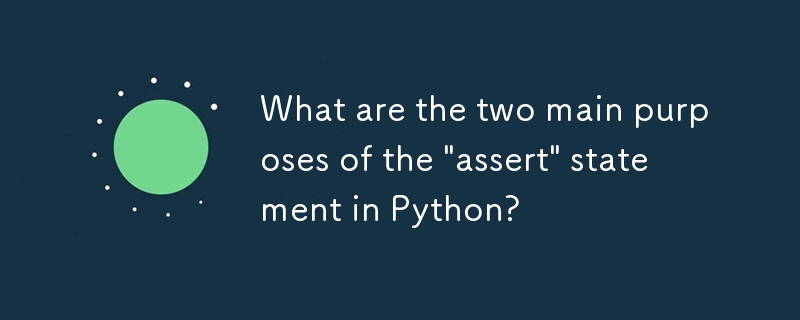

Understanding the Purpose of "assert" in Python
The "assert" statement is a valuable tool in Python and other programming languages. It serves two primary purposes:
To use "assert," simply follow this syntax:
assert condition
If the "condition" is true, the program continues execution. However, if the condition is false, an "AssertionError" is raised.
In Python, "assert" is similar to the following code:
if not condition:
raise AssertionError()Example:
>>> assert True # No action performed >>> assert False Traceback (most recent call last): File "<stdin>", line 1, in <module> AssertionError
Optional Message:
You can include an optional message to be printed if the assertion fails:
assert False, "Oh no! This assertion failed!"
Note:
Ce qui précède est le contenu détaillé de. pour plus d'informations, suivez d'autres articles connexes sur le site Web de PHP en chinois!
 Comment résoudre une erreur de script
Comment résoudre une erreur de script
 Comment résoudre l'erreur d'analyse
Comment résoudre l'erreur d'analyse
 La différence entre les pages Web statiques et les pages Web dynamiques
La différence entre les pages Web statiques et les pages Web dynamiques
 Solution à l'absence de son dans le système Win7
Solution à l'absence de son dans le système Win7
 Configurer le fichier HOSTS
Configurer le fichier HOSTS
 Solution au problème selon lequel le système Win7 ne peut pas démarrer
Solution au problème selon lequel le système Win7 ne peut pas démarrer
 Téléchargement du logiciel de trading Yiou
Téléchargement du logiciel de trading Yiou
 Que signifie le contexte ?
Que signifie le contexte ?
 Quelles sont les méthodes de détection des vulnérabilités ASP ?
Quelles sont les méthodes de détection des vulnérabilités ASP ?